top of page

(720) 819-5904
The ACE's Study
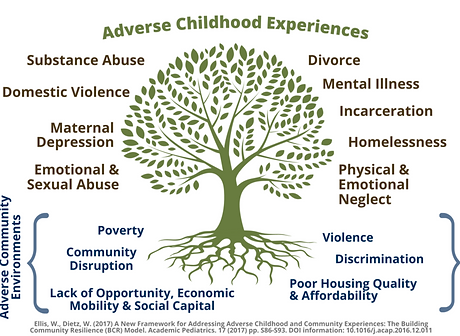
Your ACE Score
The ACE Score takes interrelatedness of ACEs into account to show how they add up to exert their effects.
The number of categories of ACEs is added up for each person to produce the ACE Score (range: 0-10).
As the number of ACEs increases, the risk of developing significant health problems increases sharply; this is called a “dose response” reaction.
More ACEs equals more risk for negative outcomes!
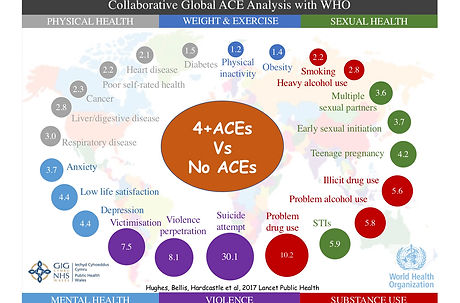
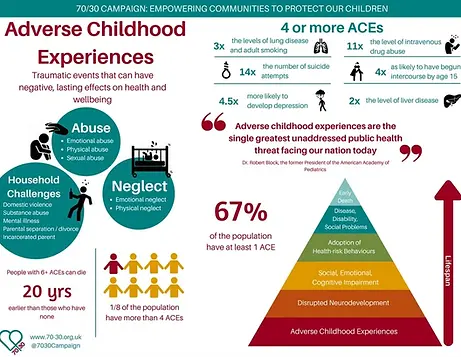
The original ACE study was conducted at Kaiser Permanente from 1995 to 1997 with two waves of data collection. Over 17,000 Health Maintenance Organization members from Southern California receiving physical exams completed confidential surveys regarding their childhood experiences and current health status and behaviors.
ACE-Related Odds of Developing Adverse Health Conditions
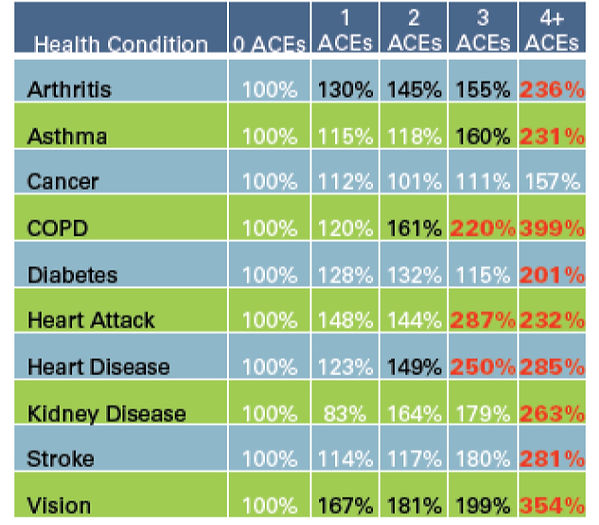
ACEs contribute to every mortality factor from heart disease, chronic autoimmune diseases, to life altering behavioral patterns in realms like addiction. One of the overarching themes is that the old adage "time heals all wounds" was a lie, and people don't just "get over it"; trauma will live and fester in your body, making you sick.
Expanding The ACEs Study
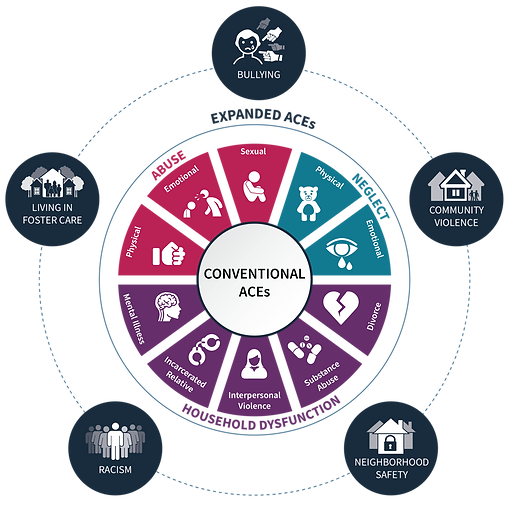
Updates to ACE categories have included Foster Care involvement and environmental violence.
Like most clinical studies performed throughout history so far, participants and variables have been strongly eurocentric; and ignore institutional and structural racism, politics, and the many systems of oppression that deeply affect the trauma people are exposed to and therefor would increase their ACEs scores.
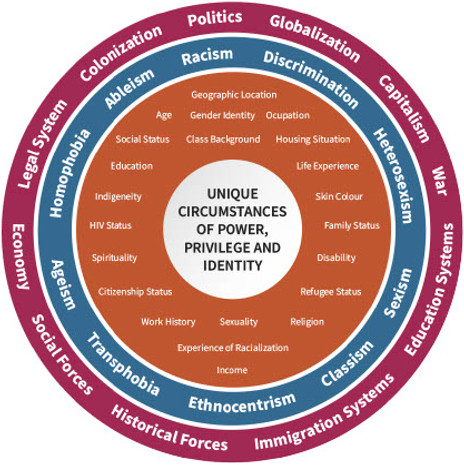
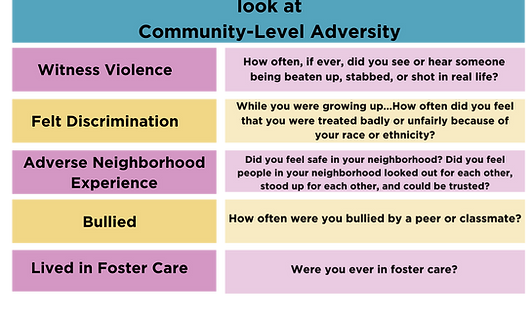
bottom of page